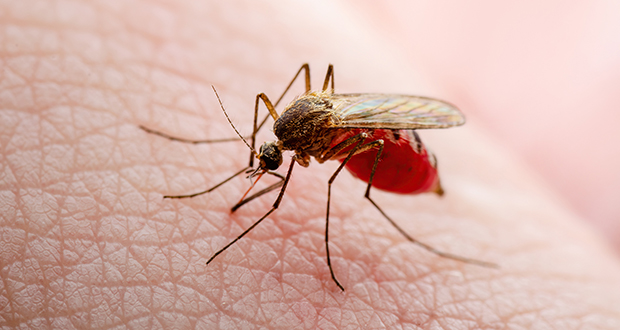Fitness
Tropicial diseases set to move closer – driven by climate change

Outbreaks of mosquito-borne illnesses are set to become more common in much of mainland Europe in the coming decades, writes Michael McHale
They have long been considered tropical illnesses, found in far-flung countries that Irish people may visit once in a lifetime.
However, vector-borne diseases – especially those transmitted by mosquitoes such as malaria and dengue – are set to become increasingly common in mainland Europe, affecting the holiday hotspots where Irish tourists can regularly be found.
At the recent global meeting of the European Society of Clinical Microbiology and Infectious Diseases (ESCMID), the future landscape for such illnesses was laid bare. In a Barcelona conference hall, clinicians from around the world heard how diseases once deemed ‘foreign’ to them may soon be landing at their doorstep with increasing regularity.
“Global warming due to climate change means that the disease vectors that carry and spread malaria and dengue can find a home in more regions, with outbreaks occurring in areas where people are likely to be immunologically naive and public health systems unprepared,” warned Prof Rachel Lowe of the Catalan Institution for Research and Advanced Studies (ICREA).
As a result, parts of northern Europe, Asia, North America and Australia are among the regions predicted to become affected by mosquito-borne diseases over the next few decades.
How the world responds to the climate crisis will be key to how much of a global health burden such illnesses become.
Currently, around half of the world’s population is at risk of vector-borne diseases. If global warming can be limited to the ambitious goal of one degree Celsius, the population at risk of malaria and dengue is expected to increase by an additional 2.4 billion people by 2100, relative to 1970-1999.
However, if the current trajectory of high carbon emissions and population growth continues, double the number of additional people – 4.7 billion – will be affected by dengue and malaria by the end of the century.
“The stark reality is that longer hot seasons will enlarge the seasonal window for the spread of mosquito-borne diseases and favour increasingly frequent outbreaks that are increasingly complex to deal with,” Prof Lowe added.
“With climate change seeming so difficult to address, we can expect to see more cases and possibly deaths from diseases such as dengue and malaria across mainland Europe. We must anticipate outbreaks and move to intervene early to prevent diseases from happening in the first place.
“Efforts need to focus on enhancing surveillance with early warning and response systems similar to those seen in other parts of the world, to more effectively target finite resources to the most at-risk areas to control and prevent disease outbreaks and save lives.”
In Ireland, 89 cases of malaria were reported in 2023, a return to pre-pandemic levels and an increase on the 53 cases reported the previous year.
Of last year’s cases, eight occurred in children under 18. Nigeria was the most commonly reported country of infection, accounting for ten cases.
On World Malaria Day last month, Ireland’s Health Protection Surveillance Centre (HPSC) issued guidance to clinicians and the public on ways to help prevent infection.
“Children – especially under the age of five – are the group who, if they catch malaria are most likely to develop complications and die,” a HPSC statement said.
“It is important for parents – born in Western and Central African countries who live in Ireland and return to their country of origin with Irish-born children – to protect themselves and their children from malaria. This can be done by taking preventive medicine and avoiding mosquito bites every time they visit a malarious area.
“Children born in Ireland have no natural immunity to malaria, and adult immunity to malaria can wane while living in Ireland,” the statement added.
As countries closer to home become impacted by mosquito-borne illnesses, finding more innovative ways to prevent infection will be required.
By combining disease-carrying insect surveillance with climate forecasts, researchers are developing ways to predict when and where epidemics might occur and direct interventions to the most at-risk areas in advance.
One such project, being led by Prof Lowe, is using a powerful supercomputer to understand how the climate and disease transmission are linked to predict mosquito-borne disease outbreaks in 12 countries.
“By analysing weather patterns, finding mosquito breeding sites with drones, and gathering information from local communities and health officials, we are hoping to give communities time to prepare and protect themselves,” said Prof Lowe.
“But ultimately, the most effective way to reduce the risk of these diseases spreading to new areas will be to dramatically curb emissions.”










